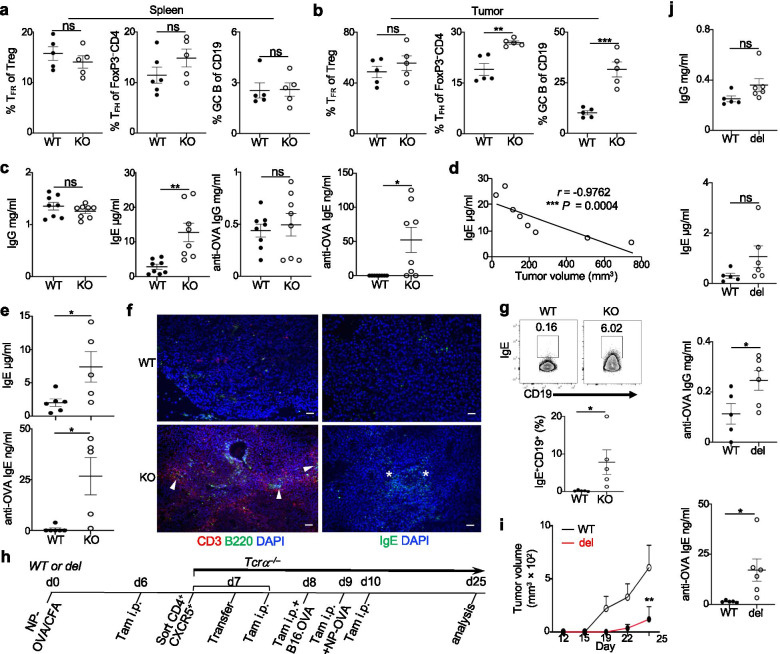Fig. 4.
Foxp3 specific deletion of Blimp1 results in increased anti-tumor humoral immunity. Analysis was performed on splenic or tumoral cells from mice bearing B16-OVA (as in Fig. 2c). Frequency of TFR, TFH and GC B-cells (as gated in Fig. 1c) in spleen (a) or tumor (b) (n = 5 per group). c) Serum total IgG, IgE and anti-OVA IgG, IgE titers (n = 8 per group). d) The relationship of serum IgE titers and tumor sizes in KO mice. e) B16-OVA/GVAX model was established as in Fig. 2d. Serum total IgE and anti-OVA IgE titers (WT: n = 6; KO: n = 5). The value 0 is used to indicate the undetectable anti-OVA IgE titers in c,e. f) Representative IF staining of T (CD3), B (B220), or IgE in the tumor (100 ×). Arrowheads, T/B clusters; *, IgE. g) Intracellular staining and quantitation of IgE in CD19+ B-cells (n = 5 per group). WT: Foxp3YFP-Cre, KO: Prdm1fl/flFoxp3YFP-Cre. h-j) Transfer of Blimp1-deficient TFR cells induces better anti-tumor response. WT: Rosa26ERT2-Cre; del: Prdm1fl/flRosa26ERT2-Cre. h) Schematic diagram of experiment. i) Tamoxifen-induced deletion of Blimp1 in TFR cells delayed tumor growth (n = 3 per group). j) Serum antibody titers (WT: n = 5; del: n = 6). Data represent one of at least three (a-d, f) or two (e,g,i) or are pooled from two (j) independent experiments. ns, no significance, * P < 0.05, ** P < 0.01 and *** P < 0.001 (a,b,c,e,g,j, unpaired two-tailed Student’s t-test; d, Spearman’s r; i, two-way ANOVA with Sidak’s comparisons test). Bars, mean ± SEM

